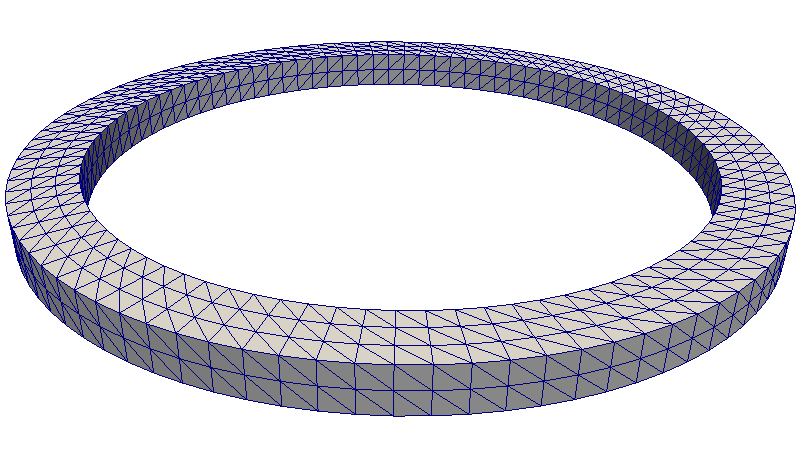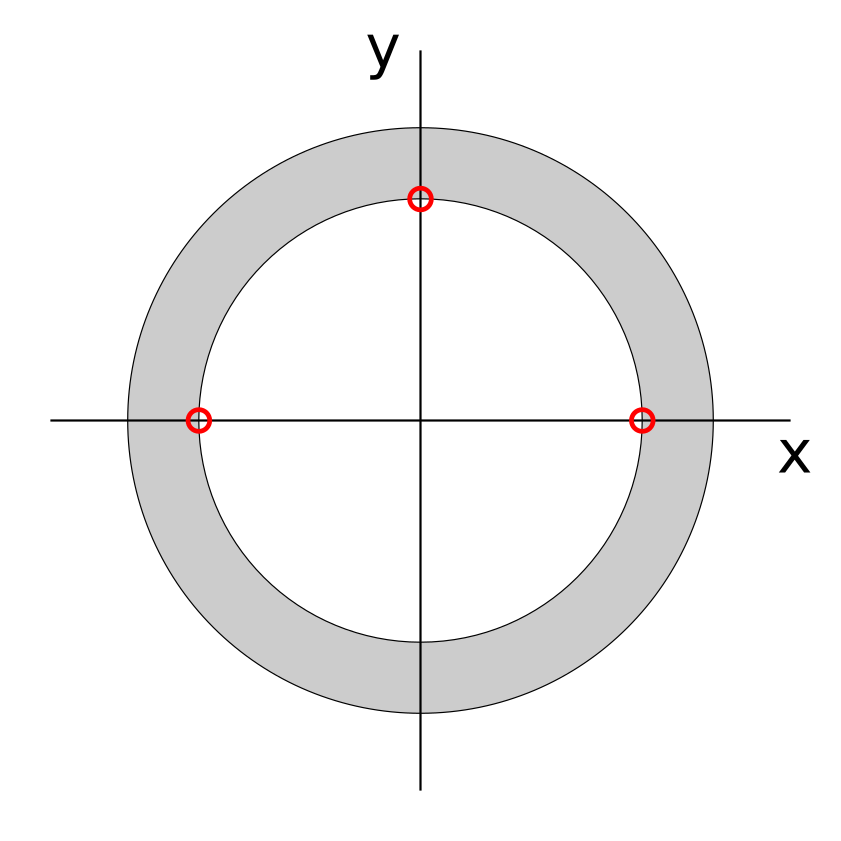Cavity Coupling
Module: devtests.mechanics.cavity.run
Section author: Christoph Augustin <christoph.augustin@medunigraz.at>, Gernot Plank <gernot.plank@medunigraz.at> and Matthias Gsell <matthias.gsell@medunigraz.at>
This example provides pure mechanics and electromechanics examples on a simple ring geometry.
Problem Setup
This problem generates a simple ring mesh using the
carputils.mesh.Ring class. The ring is tesselated into tetrahedra as
shown below:

In all experiment types in this example, the top and bottom surfaces of the
ring are constrained to lie in the same plane with Dirichlet boundary
conditions, and an additional three nodes on the bottom ( ) surface
are constrained such that free body rotation and translation is prevented.
Two nodes on the x axis are prevented from moving in the y direction, and one
node on the y axis is prevented from moving in the x direction:
) surface
are constrained such that free body rotation and translation is prevented.
Two nodes on the x axis are prevented from moving in the y direction, and one
node on the y axis is prevented from moving in the x direction:

Experiments
Several experiments are defined:
neumann- Apply a pressure to the endocardium with a Neumann boundary condition at successively higher incrementsactive-free- Run an active contraction simulation without constraints on cavity size or pressureactive-iso- Run an active contraction simulation with an isovolumetric cavity constraintunload- Compute the unloaded reference state of the ringunload-validate- Reinflate from the unloaded reference state, which should reproduce the original mesh
Other Arguments
Another key argument is the stress model. Three active stress models are available:
NPStress- The simple stress model from Nash and PanfilovRice- The more biophysically realistic model from RiceFxStress- A very simple active stress model based on activation times and constructed with exponential functions